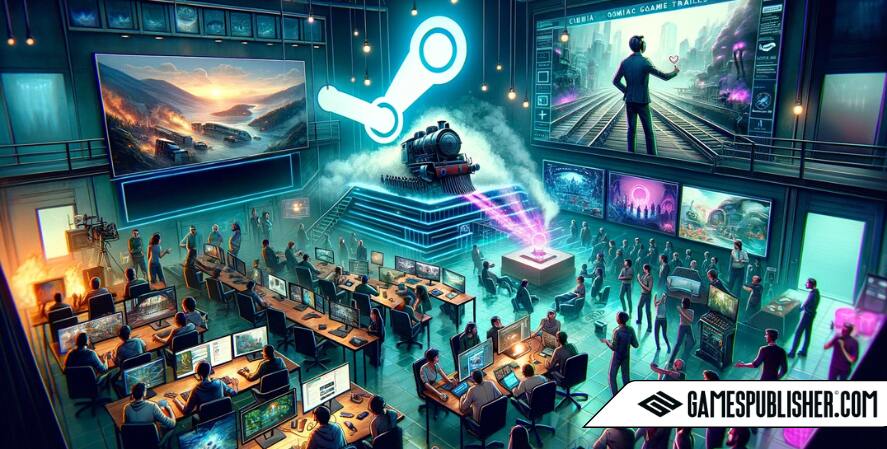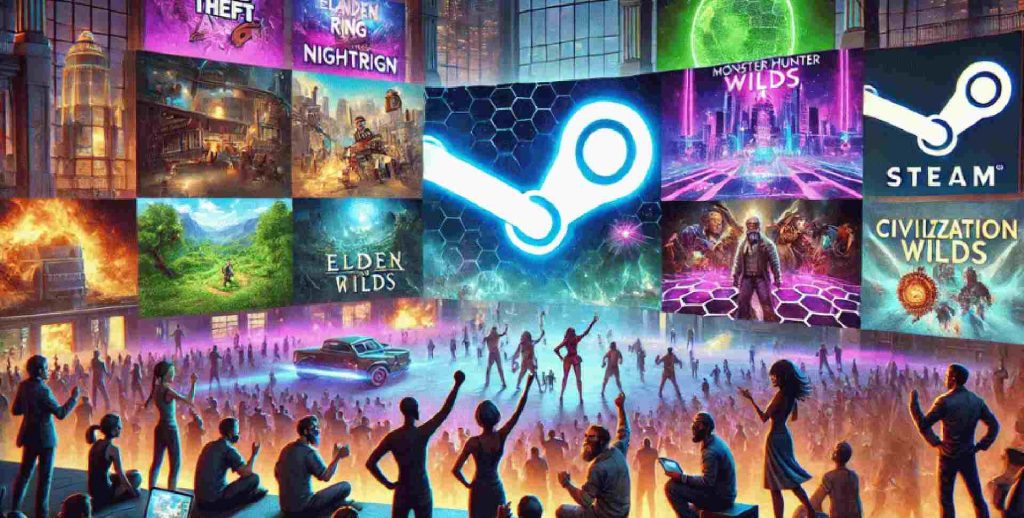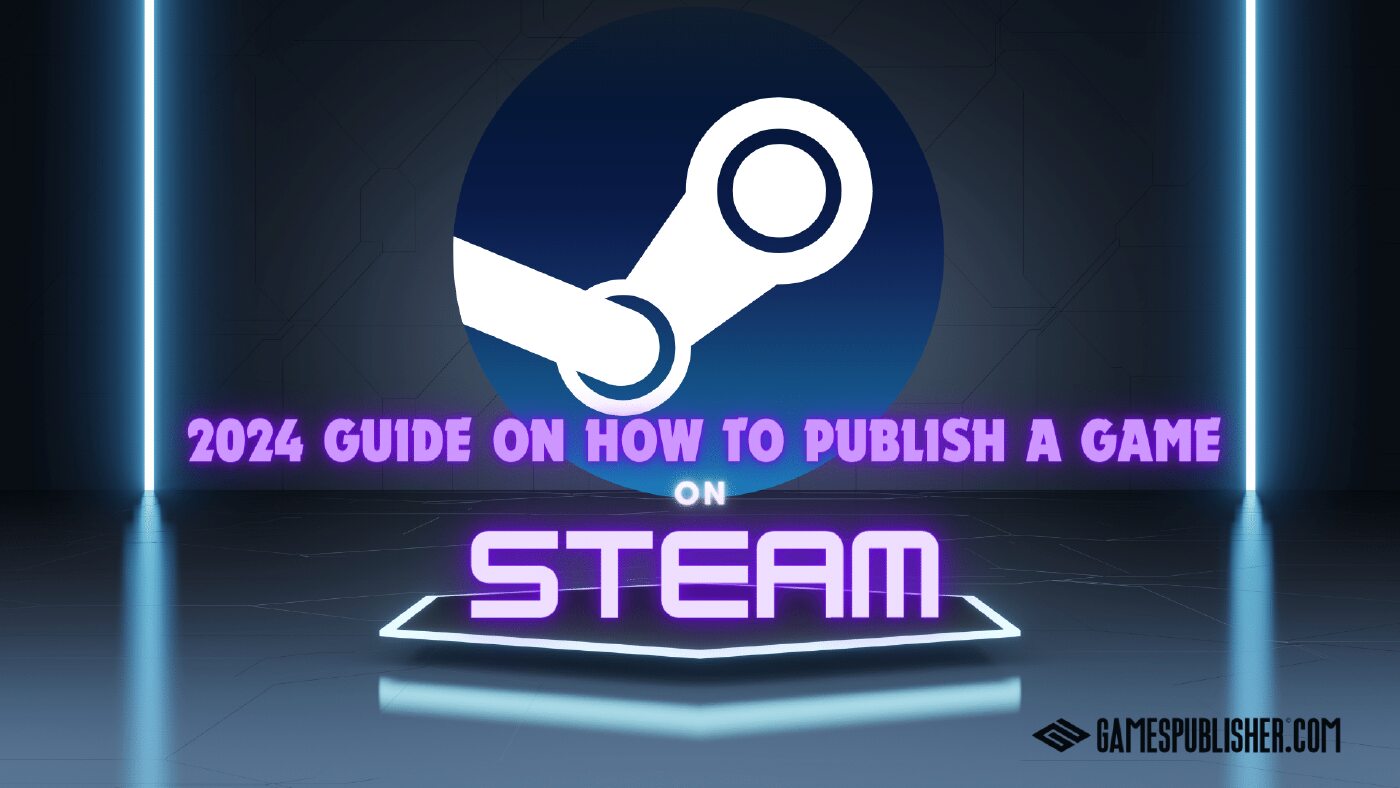Are you looking into how to publish game on Steam? This is a question many developers ask when looking to reach a global audience.
As the leading platform for game distribution, Steam connects creators with over 132 million monthly active users across 249 countries. With support for dozens of payment methods, pricing in multiple currencies, and a reliable distribution network, it’s the go-to platform for developers aiming to make their mark in the gaming world.
Why Publish on Steam?
Publishing on Steam offers unparalleled access to a diverse and engaged gaming audience worldwide. The platform not only provides a robust infrastructure for distribution and payment processing but also enhances visibility in a competitive market.
With Steam’s evolving landscape, which now includes significant numbers of players preferring Simplified Chinese, staying updated on the platform’s user base is crucial for targeting and localization strategies.

7 Steps on how to Publish Game on Steam
Publishing your game on Steam may seem overwhelming at first, but it’s actually a structured and manageable process. Whether you’re an indie developer or part of a larger studio, following the right steps ensures your game meets all technical and business requirements.
In this guide, we’ll walk you through the 7 essential steps from creating a Steamworks account to launching your game on one of the world’s biggest PC gaming platforms.
1. Preparing Your Game for Steam

Before publishing on Steam, ensure your game is technically ready for the platform. Select a compatible engine that supports Steam integration and complete the Steam Direct process, which includes identity verification and a one-time app fee.
Once approved, you’ll gain access to the Steamworks SDK, where you can upload builds, configure your game settings, and prepare for Valve’s mandatory build review. This step ensures your game functions properly before release and aligns with Steam’s technical standards.
- Choose the Right Engine: Each engine has a specific process for packaging games for Steam.
- Steam Direct: Complete digital paperwork, pay an app fee, and verify your identity to start the process.
Using Steamworks SDK & Build Submission
Once your game is approved through Steam Direct, you’ll use the Steamworks SDK to upload builds and configure your store page. Valve will initiate a build review approximately 30 days before release to ensure your game runs correctly and meets all platform requirements.
2. Enhancing Your Game’s Page
Your game’s Steam page is a vital marketing asset. Begin by launching a “Coming Soon” page to build early visibility and wishlist traction. Customize your store page with rich keywords, translated descriptions, and engaging visual assets like banners, trailers, and screenshots.
A well-optimized page not only enhances discoverability but also sets the tone for your game’s identity and value proposition to potential players worldwide.
- Coming Soon Pages: Build anticipation with a preview of your game.
- Custom Store Page: Utilize keywords and support multiple languages for better discovery.
- Graphical Assets: Select banners and screenshots carefully to attract attention.
3. Managing Your Game’s Business

Steam offers developers comprehensive business tools to manage game performance. Leverage analytics to monitor player behavior and sales trends, use Steam Playtest to gather early feedback, and choose appropriate DRM settings.
New features like standalone demo pages, introduced in July 2024, also allow potential players to explore your game before launch, complete with their own reviews and visibility on the platform.
- Analytics: Use Steam’s sales data and analytics for informed decisions.
- Playtest and DRM: Implement Steam Playtest for feedback and choose DRM options wisely.
Steam Playtest & Demo Page Features
Steam Playtest lets you invite players to a closed beta test without requiring them to buy or wishlist your game. As of July 2024, Steam also supports standalone demo pages with user reviews, helping players evaluate your game before its full release.
4. Marketing and Visibility
Success on Steam hinges on visibility and player engagement. Utilize community tools such as wishlists, forums, and Early Access to foster excitement and loyalty. Participate in major sales events and consistently update your game to maintain its presence in Steam’s algorithm.
An active approach to community interaction can significantly boost your game’s chances of standing out in a competitive landscape.
- Community Engagement: Use wishlists, Early Access, and engage in forums.
- Visibility Boosts: Participate in sales events and use updates to stay relevant.
Using Steam Events and Next Fest
Participating in Steam’s seasonal events like Next Fest can give your game a huge boost. These events highlight upcoming titles and offer free demo exposure to tens of thousands of players. Even if your game isn’t complete, having a playable demo and engaging trailer can help gather wishlists and feedback. Use this momentum to refine your page before the final release.
Example: How an Indie Game Succeeded on Steam
For example, the indie game Celeste launched on Steam with strong store page optimization, community engagement through Discord, and positive reviews via early access. The developers regularly updated their devlog and participated in Steam festivals, which boosted wishlist conversions. This strategy helped them achieve over 1 million units sold. While results vary, their disciplined use of Steam’s tools shows what’s possible with clear planning and community focus.
5. Virtual Reality Integration
If your game supports VR, it must meet SteamVR’s hardware and software requirements. Ensure your title functions seamlessly across headsets and controllers by integrating with the Steam Input API. This guarantees compatibility and a smoother experience for players using diverse setups, making your VR title more accessible and polished on the platform.

- SteamVR Compatibility: Ensure your game meets VR requirements for Steam.
Requirements for VR Games on Steam
If you’re launching a VR title, make sure it’s fully compatible with SteamVR. Your game should also support popular VR controllers, and it’s recommended to use the Steam Input API to ensure smooth input across various hardware setups.
6. Understanding Financial Aspects
Navigating Steam’s financial structure is crucial for long-term success. A $100 Steam Direct fee initiates your submission and is refundable once your game generates $1,000 in revenue. Developers must also comply with tax documentation and utilize built-in tools for refund reporting.
Steam’s revenue share model starts at 70/30 and becomes more favorable for high-earning titles, offering up to 80% to developers once specific revenue thresholds are crossed.
- Steam Direct Fee: A $100 fee that’s recoupable after your game reaches $1,000 in sales.
- Tax and Refund Reporting: Navigate through Steam’s financial tools for a smooth financial operation.
Steam Revenue Share Breakdown
Steam uses a tiered revenue split model:
- 30% to Steam on gross revenue up to $10 million
- 25% beyond $10 million
- 20% beyond $50 million
This model supports long-term growth and rewards high-performing games with better revenue shares.
7. The Release Process on how to publish game on steam

As your release date approaches, finalize your store assets and game build within the Steamworks dashboard. Submit everything for Valve’s review, which typically takes place about 30 days before your intended launch.
After approval, you can schedule your release or publish immediately, bringing your game live to millions of users on Steam’s global platform.
- Store and Game Build Preparation: Ready your store page and game build for review.
- Review and Release: Submit for Valve’s review before hitting the release button.
Post-Launch Optimization on Steam
After release, your work on Steam isn’t done. Regular updates, bug fixes, and community feedback play a huge role in your game’s success. Use Steam’s analytics to track player retention and session data.
Host limited-time events or sales to spike interest. Monitor user reviews and engage with the community to build loyalty and visibility. Positive ongoing support can increase your long-term revenue and help future projects get noticed.
Steam Publishing Checklist
Publishing a game on Steam involves several technical and strategic steps that can be easy to track with a checklist. Whether you’re preparing for your first release or managing a studio pipeline, use this guide to stay on course. Begin by setting up your Steamworks partner account and submitting all necessary identity and tax documentation.
Pay the $100 app fee to unlock access to the Steamworks dashboard. From there, upload your game build using the SDK, prepare your store page with banners, trailers, and tags, and submit your build for Valve’s review. Don’t forget to plan your release timing and track post-launch metrics to ensure continued visibility and growth.
- Set up a Steamworks partner account
- Submit tax/identity documents
- Pay $100 app fee
- Upload build & assets via Steamworks SDK
- Prepare Store Page (trailer, banners, tags)
- Schedule release & submit for Valve review
Monitor analytics and reviews post-launch
Frequently Ask Questions(FAQs)
Steam Direct lets you publish after identity verification and a $100 fee, which becomes refundable after $1,000 in sales.
Valve reviews your build within about 30 days before release through Steamworks build review.
70% to developers up to $10M; 75% above $10M and 80% beyond $50M.
Yes. Steam Playtest supports closed beta, and since July 2024, demos can have their own pages and reviews.
Ensure SteamVR compatibility and controller integration via Steam Input API.
Conclusion
This comprehensive guide on how to Publish on Steam is your ultimate resource when you’re ready to release your game.
Publishing your game on Steam is a significant step towards achieving success in the gaming industry. By following the outlined steps and leveraging Steam’s comprehensive resources, developers can maximize their game’s potential for a successful launch.
Embrace the opportunity to showcase your game to a global audience and join the vibrant community of developers on Steam.
👉 Ready to Publish on Steam? Start your Steamworks partner signup today and download the SDK to build your store presence.
Steam Pre-Launch Checklist: Identity ✔ Store page ✔ Playtest ✔ Build Review ✔
Loading survey...

